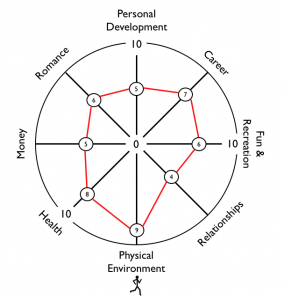Can We Really Have It All?
Part One of a Three Part Series
May 2013 Insights
As a mother of two children and as a women’s self-development life coach, I know first hand how challenging it is for most women to maintain a place for themselves while balancing the many demands in their complex lives. I understand how a women’s dedication and commitment to others often overrides their ability to take care of themselves because I too from time to time experience getting lost in the shuffle of life. I completely get how hard it is to “have it all”. But what I have come to learn, both personally and professionally, is that having it all really just boils down to three main elements. First, and foremost is understanding and respecting each and every important aspect in your life. Second, is obtaining the right tools and strategies to navigate those aspects in your life and third is having the emotional buy-in to succeed in them.
In this Month’s Keys to Success insights we start by laying out the groundwork – assessing and determining the aspects of your life that are most important to you. Without an understanding of what aspects in your life you desire increased attention to as well as how you are currently managing those aspects, there is no point in pursuing the strategies to navigate them, let alone the motivation to acquire them. Think about it, your time is valuable, why waste it, it’s essential to consider what YOUR ideal image of a balanced life is. It’s not uncommon to get caught up in other people’s ideas of what “having it all” means. Our upbringing, personal and professional interactions as well as all the indirect messages we receive from the social media can significantly skew our own ideas of what makes sense for us. As a result we come up empty handed, wasting time and chasing a lifestyle we never really wanted to begin with. So in order to “have it all” you must first determine what “having it all” means to you.
 Let’s begin with taking a “helicopter view” of your life. Since most women would agree that their lives are made up of many vital areas that are important to them, it’s helpful to get a visual representation of what that may include. For many that may involve aspects like their health, finances, family/parenting, work, recreation, personal growth, spirit, romance, social and more. By identifying those important aspects in your life and then assessing your level of satisfaction in each of them you will begin to see what areas may need more attention in order to find greater balance in your life.
Let’s begin with taking a “helicopter view” of your life. Since most women would agree that their lives are made up of many vital areas that are important to them, it’s helpful to get a visual representation of what that may include. For many that may involve aspects like their health, finances, family/parenting, work, recreation, personal growth, spirit, romance, social and more. By identifying those important aspects in your life and then assessing your level of satisfaction in each of them you will begin to see what areas may need more attention in order to find greater balance in your life.
Here’s an exercise I often share with my clients, it is called the Wheel of Life and is commonly used by many life coaches. First start by checking out the example of a completed Wheel of Life diagram found below. Then, using the example:
- Draw two large circles on separate pieces of paper and divide each into 6-8 pie wedges, similar to the example shown.

- Then brainstorm and label each section with the aspects of your life that are Important To You. You can use some of the areas I mentioned above or if you prefer you can use the roles you play in your life. Examples include husband/wife, father/mother, manager, colleague, team member, community leader, sports player, or friend. *Make sure to use the same aspects in both circles.
- Use one circle to rate your level of satisfaction in each section that you identified. While using the other circle to rate how much time you devout to each of those aspects. Keeping in mind a rating scale of 1 (low) to 10 (high).
- Now connect your ratings on each circle. Do you see consistency or peaks and valleys? For example, if you were to roll these circles like a wheel would it roll smoothly or be bumpy?
- If you answered smoothly then you get a gold star, you are leading a balanced life! However for most of us, it is more common to experience the bumps. Those bumps are the gaps and are likely to be the areas of your life where you need and want to put more attention to. Of course, at times you will need to allow for some gaps because life will throw you an occasional curve ball requiring you to have to pay more attention to certain aspects of your life then others. So it’s important to remember that there can be some imbalance from time to time. However, the most important awareness to take away from this exercise is knowing that overall neglecting any one or more of your valued aspects in your life will result in sabotaging your own success and happiness.
Once you have clarity regarding those areas in your life you value and want to enhance, you’ll better be able to put a plan in place to obtain greater balance in your life. Though naturally each woman’s journey “to having it all” is unique, there are common strategies applicable to each woman’s quest to finding life balance. In next month’s Keys to Success Insights I will post part two of this three part series newsletter and share six foundational strategies essential for anyone seeking greater balance.
Please let me know how this post resonates with you!
I love hearing your thoughts and welcome insightful feedback.
-Holly-
